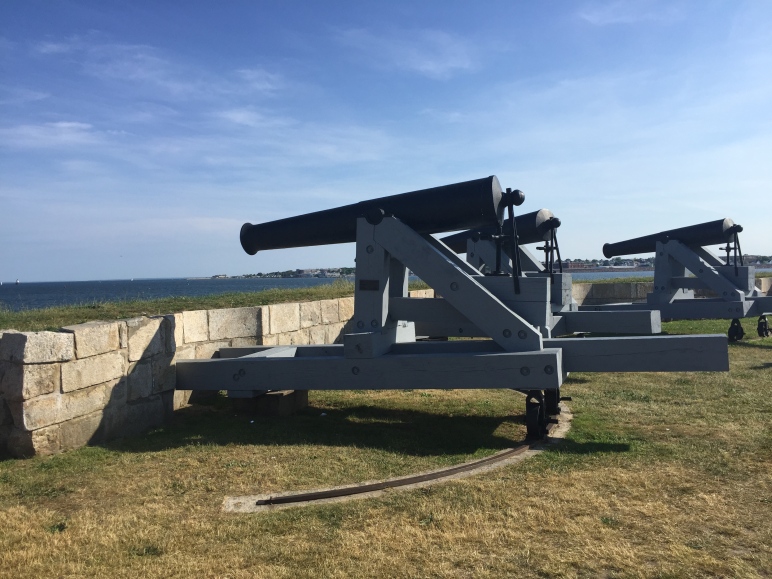
Fort Phoenix
Fairhaven, Massachusetts is most know for the state park of Fort Phoenix. Located at the entrance of the harbor to Fairhaven and New Bedford, Fort Phoenix was vital in saving the towns of Fairhaven and New Bedford during the American Revolution in 1775, where the first naval battle against the British took place. Soon after, the fort was built to protect the two cities.

In 1778, the fort was attacked and destroyed by the British but was rebuilt so quickly that the name Fort Phoenix was given to the protecting grounds – to symbolize the phoenix rising out of the ashes.
The fort has served in the war of 1812 when, in 1814, it helped deter British attacks off the coast. The fort was also used during the Civil War. Eight cannons were placed at the fort, five of which remain there today.

In the early 1900s (1926), the property was bought by Henry Huttleston Rogers’ (one of the most influential figures of Fairhaven) daughter.
H.H. Rogers
Henry Huttleston Rogers (1840-1909) was from Mettapoisett, MA, neighboring city to Fairhaven. He was a financier and business leader and is known mostly for his involvement in the oil industry and rising to become one of the leaders of Standard Oil.
In Fairhaven, H.H. Rogers is most known for his generosity. He donated many buildings to the city, including Town Hall, mentioned in a previous post.

Of the buildings donated, Fairhaven High School is the most recognizable. I initially thought the high school was a government building because of its grandeur and ornate architecture. The building is absolutely stunning! H.H. Rogers was very fond of education and educational advancement and donated not only the high school but a grammar school as well.
Additionally, H.H. Rogers donated Millicent Library, still in use today. I have yet to make a trip inside the library but will soon.
H.H. Rogers’ influence on the city is so influential, in fact, that the main stretch (Route 6) is named after him, Huttleston St.
John Cooke

The last major landmark in the breath-taking city of Fairhaven is the tomb of John Cooke. Cooke was buried in 1695 and was the last male survivor who came to American off the Mayflower. This pilgrim made the journey from Plymouth, England to Provincetown, then to Plymouth, Massachusetts. Finally to find himself and die in Fairhaven, Massachusetts, the city is honored to honor him with a beautiful tombstone in true pilgrim fashion – reflecting the historic Plymouth Rock – an enormous boulder with name plate.
